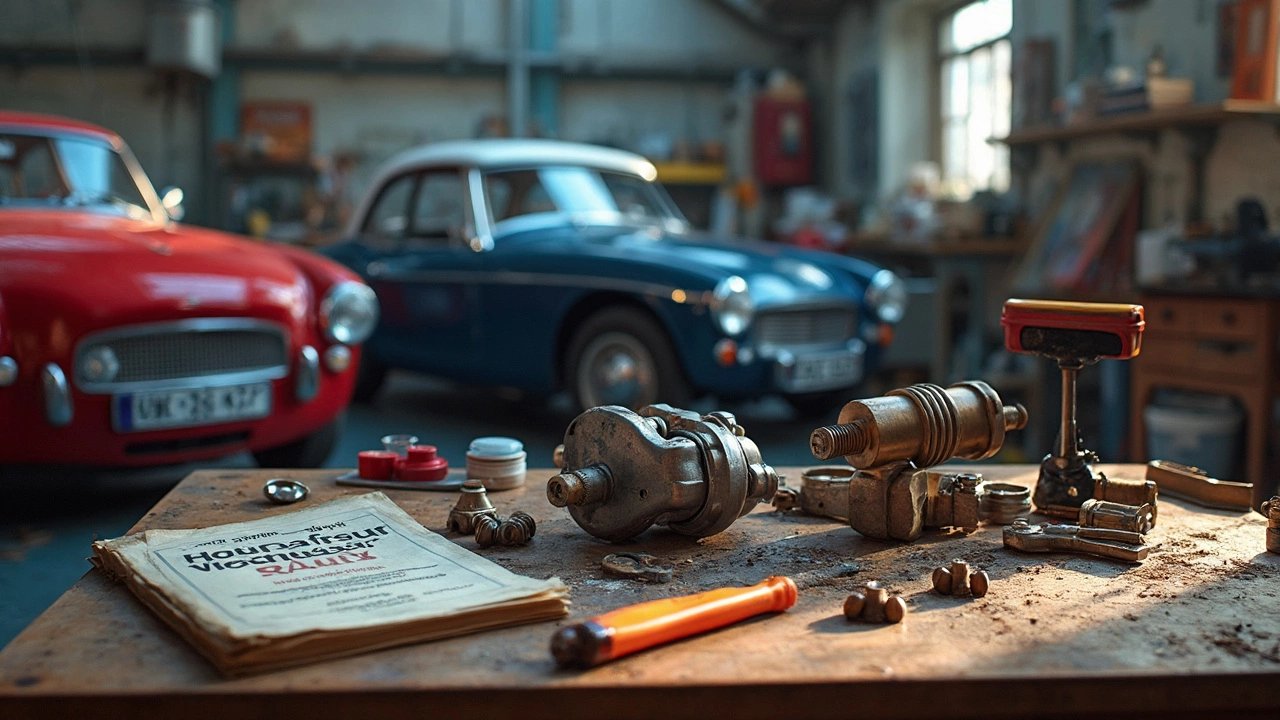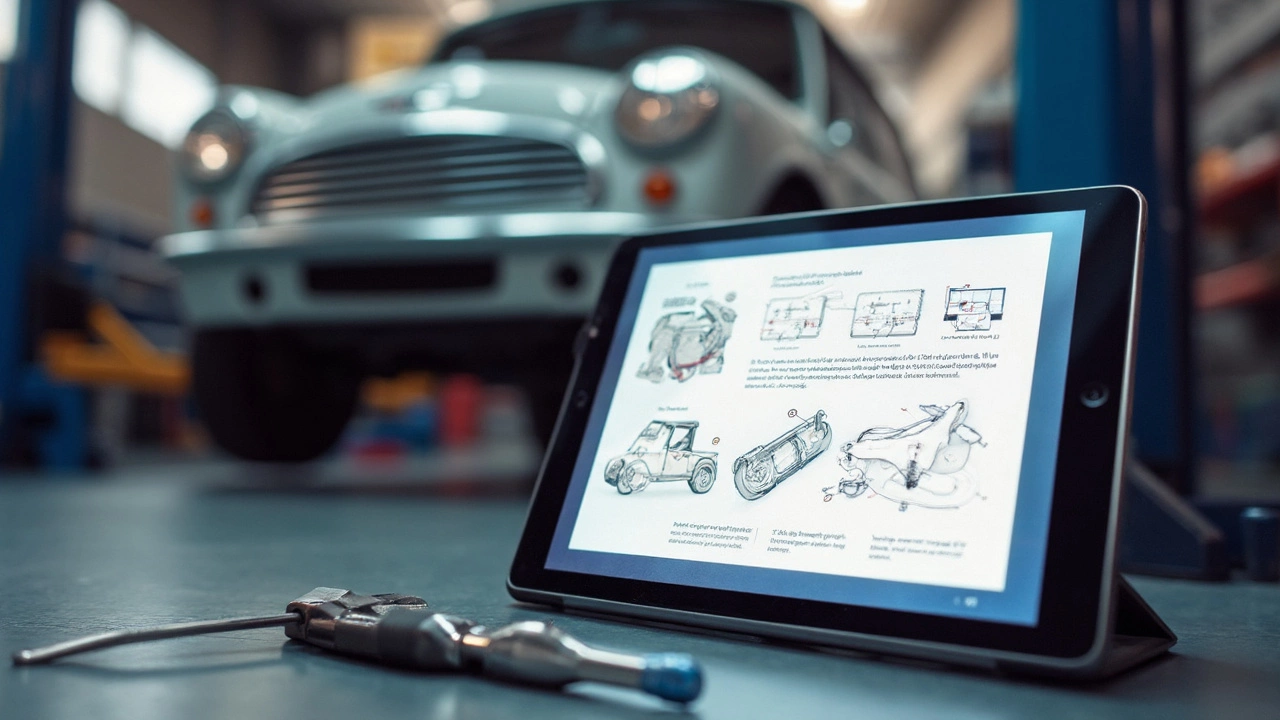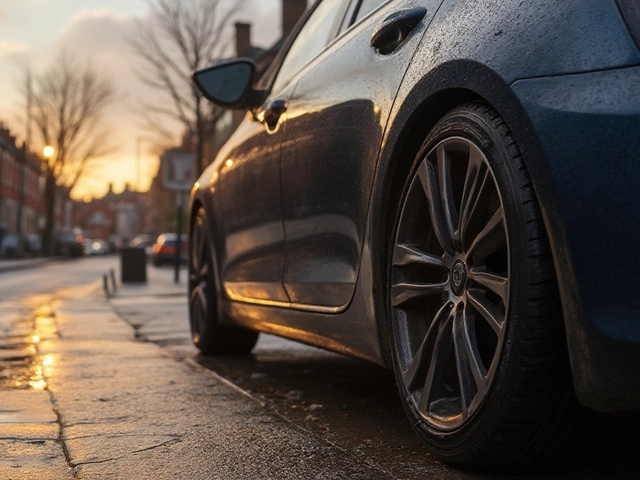So, you think your car's fuel pump might be acting up, huh? It’s easy to feel like you’re stuck between a rock and a hard place—do you shell out cash for a mechanic, or can you tackle the job on your own? Fixing a fuel pump isn’t for the faint-hearted but don’t hit the panic button just yet. With the right info and a bit of elbow grease, you might just be able to swing it yourself.
Recognizing when your fuel pump is on the fritz is step one. Are you experiencing sputtering under acceleration or sudden power losses? Maybe your car struggles to start in the morning. These could all be signs pointing to your pump waving the white flag. Knowing what to look for can save you a ton of frustration down the road.
Feeling brave and ready to get your hands dirty? Let’s chat about the tools you’ll need if you're going to roll up those sleeves. A basic toolkit with a few specific items is non-negotiable if you’re going to give this a go. So, grab that wrench, make sure you've got the socket set ready, and let’s get cracking!
- Signs of a Failing Fuel Pump
- Tools You’ll Need
- Step-by-Step DIY Guide
- Safety Tips to Keep in Mind
- When to Consult a Professional
Signs of a Failing Fuel Pump
Alright, let’s get into it. How do you know if your trusty car's fuel pump is starting to throw in the towel? Recognizing these signs early might just save you from getting stranded somewhere you’d rather not be.
One of the main clues is trouble starting your car. If your ride cranks longer than usual before revving to life, your fuel pump might not be getting enough juice to push fuel efficiently. It’s like your car’s way of saying, ‘Hey, there’s a problem brewing here!’
Another red flag to watch for is jerking or sputtering when you hit higher speeds. Ever feel your car acting like it's had too much coffee and starts jittering? That could be the fuel pump having a hard time keeping a steady flow.
If you're noticing a sudden drop in fuel efficiency, it might be your fuel pump turning traitor. When it struggles, your engine could burn more fuel to compensate. Keep an eye on that fuel gauge.
- Car stalling at high temperatures
- Noises from the fuel tank
- Sudden loss of power when accelerating
These symptoms don't just randomly pop up together unless they’re all nodding towards a fuel pump issue. So, what should you do if these symptoms start showing up like uninvited guests? Well, that might be the right time to grab some tools or call in the cavalry if you’re not feeling DIY enough.
Tools You’ll Need
Tackling a fuel pump fix? Great! Having the right gear makes everything so much easier. Trust me, diving into this without the proper tools is like trying to cook a five-course meal with one frying pan—not fun!
First off, make sure your basic toolkit is complete. You’ll need the usual suspects: screwdrivers, pliers, and a wrench set. These are staples in any car maintenance task. But a fuel pump fix asks for a bit more finesse.
- Socket Set: This is your bread and butter. Try and get a full set; missing that one size you need will drive you mad.
- Fuel Pressure Gauge: Huge help in diagnosing the issue. This tool can confirm if you're actually dealing with a fuel pump problem or something else.
- Jack and Jack Stands: Safety first! Always use these if you need to lift your car.
- Goggles and Gloves: Oil and car parts are harsh on the skin, and flying bits are never fun. Keep yourself protected.
- Voltmeter: For checking electrical connections. You’ll want to ensure the pump is getting power.
- Fuel Line Disconnect Tool: Since you’ll need to detach the fuel lines, this tool is a lifesaver. They come in various sizes, so check the specs for your vehicle.
Before you get into it, check your car’s manual. It can clue you in on any specific tools you might need. Not every car is built the same, right? And hey, a quick tip: laying out your tools beforehand saves time and stress, so you're not rummaging around halfway through!
Feeling a bit geeky about numbers or want to geek out with some data? Well, a quick peek at a common tools cost can give you an idea of what this DIY adventure might cost. Take a look at this handy table:
| Tool | Average Cost (£) |
|---|---|
| Socket Set | 20 - 50 |
| Fuel Pressure Gauge | 30 - 60 |
| Jack and Jack Stands | 40 - 80 |
| Voltmeter | 10 - 30 |
| Fuel Line Disconnect Tool | 15 - 25 |
Adding up these costs versus the price of hiring a mechanic can give you a sense of your savings. Just remember, getting all set means fewer head-scratches, and your DIY project will run smoother.

Step-by-Step DIY Guide
Alright, if you're ready to roll up your sleeves and fix that fuel pump yourself, here's how you can get it done. It's not rocket science, but it's not a walk in the park either. Make sure you've got your tools handy and a bit of patience up your sleeve.
- Safety First: Always start by disconnecting the car battery. Messing with anything electrical related without cutting the power is a recipe for disaster.
- Locate the Fuel Pump: Depending on your car model, this might be inside the fuel tank or accessible from under the rear seat. Check your manual or do a quick online search specific to your car model.
- Relieve Fuel System Pressure: Finding and removing the fuel pump fuse, starting the car, and allowing it to run until it stalls is a good way to relieve pressure. This ensures you don't get a face full of fuel when you start disconnecting lines.
- Remove the Pump: Unbolt and disconnect all relevant lines and fittings gently. Keep a rag handy for any unexpected spills.
- Compare the New and Old Pump: Before you install the new one, make sure it’s a match with the old one. It should fit like a glove. Also, come on, no shame in doing a victory dance here.
- Install the New Pump: Reattach all lines and fittings just like they were on the old pump. Make sure everything is tightened properly—loose fittings are trouble waiting to happen.
- Reconnect Everything: Attach the power line and make sure everything is secure. Then, reconnect the car battery.
- Test It Out: Turn the ignition and let your ears listen to that sweet sound of the pump working again. If it purrs without hiccups, you nailed it!
Here's a little table of common tools you might need to make your life easier:
| Tool | Purpose |
|---|---|
| Socket Set | For loosening bolts and nuts |
| Wrench | Adjusting pressure fittings |
| Screwdrivers | Removing hoses and covers |
| Drip pan | Catching any fuel spills |
| Rags | Cleaning up spills |
Throw a pat on your back when you’re done. Fixing a fuel pump isn’t something everyone can claim they've tackled, but here you are, ticking it off your list. If anything feels off during the job, don’t hesitate to reach out to a professional. Better safe than sorry, right?
Safety Tips to Keep in Mind
Alright, if you're planning to tackle your fuel pump replacement, safety is the name of the game. Before diving into the task, there are a few crucial things you need to keep in mind to ensure things go smoothly and safely.
First off, work in a well-ventilated area. Remember, you're dealing with gas, which means there’s a strong smell and risk of vapor build-up, so you don’t want to be stuck in a closed garage. Crank open those doors and windows, or better yet, do the job outdoors if possible.
Next, disconnect the car battery. It might seem obvious, but we often forget the basics when we’re knee-deep in a project. This step helps prevent any accidental sparks—nobody wants a fireworks show when they’re just trying to fix their car.
- Make sure your car is on a level surface. It prevents rolling and gives you a stable base to work on.
- Keep a fire extinguisher nearby, just to be extra safe. Better to have it and not need it, right?
- Use jack stands if you need to elevate your car. Relying solely on a jack is risky business.
If you've got to deal with fuel lines, be prepared for some spillage. Keep a pan or bucket handy to catch any fuel, and never work near open flames or high heat sources.
Finally, don’t rush. The key to DIY car repair is patience. Double-check each step, and if something doesn’t feel right, don’t force it. Step back, review what you’ve done, and make sure everything is lined up as it should be.
And there you have it—follow these tips, and your DIY fuel pump project has a much better chance of going off without a hitch!

When to Consult a Professional
Alright, you’ve made it this far, but is it time to call in reinforcements? Knowing when to step back and let a pro handle things can save you from a world of trouble—both for your ride and your wallet.
First off, if you’re not feeling completely confident about identifying the problem as a bad fuel pump, don't hesitate to seek help. It's easy to mistake pump issues for something else, like a bad fuel filter or spark plug problems. A misdiagnosis could send you down an expensive rabbit hole.
Having the right tools is crucial, but expertise matters too. If accessing your fuel pump involves removing the gas tank or messing with intricate electronic parts, it might be a job better suited for someone trained in this stuff. The last thing you want is to accidentally yank the wrong wire or misplace a bolt.
Time is another factor. Let’s face it—not everyone has a weekend to spare for trial and error. Skilled mechanics can often do the job faster and more efficiently because they've done it a hundred times.
Consider warranties and insurance, too. If your car's under warranty, tinkering around yourself might void the coverage. Then you're left holding the bag if something bigger crops up later.
| Issue Severity | DIY Feasibility |
|---|---|
| Minor Symptoms | High |
| Major Disassembly Required | Low |
If anything feels overly complicated or if complexities start escalating, take it as a cue to let the professionals do their thing. Sometimes peace of mind is worth every penny spent at the mechanic’s.


